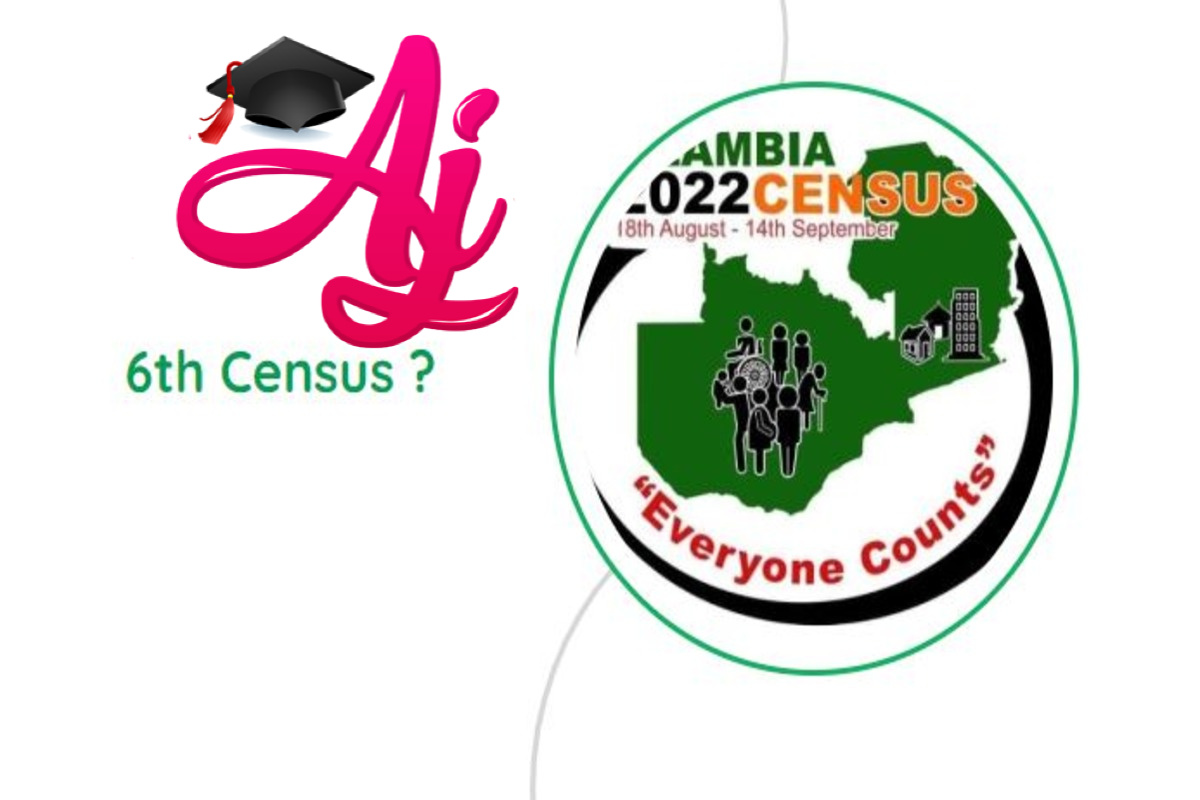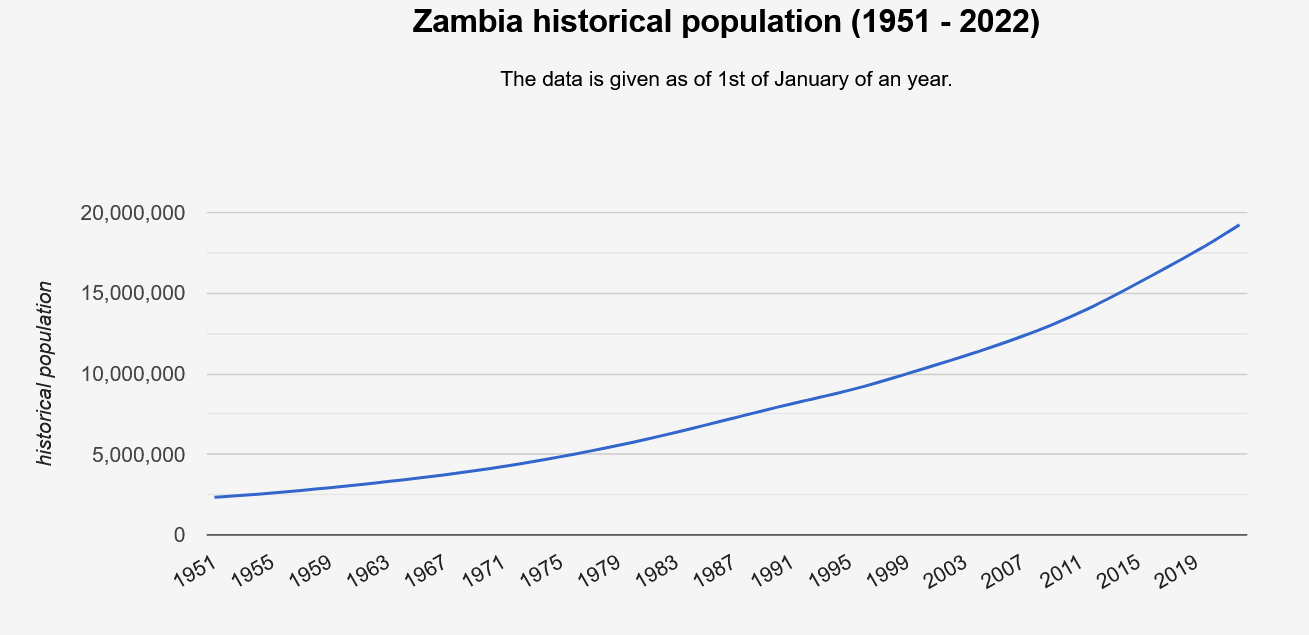JIUNGE NASI WHATSAPP TU FOLLOW. BONYEZA HAPA Zamstats Census aptitude test results Zambia 2022
Zamstats Census aptitude test results Zambia 2022 On this Article you will Find Zamstats Aptitude Test Results 2022,List of Names Success on zimstats Aptitude Test,Selected Names for Zambia Census Job Stay with us.

Zamstats Aptitude Test Results
The population of Zambia is expected to grow by 586,198 people in 2022, reaching 19,831,047 by the start of 2023. Given that there will be 595,051 more births than deaths, the natural increase should be positive. The population will decrease by 8,853 as a result of migration if external migration stays at its level from the previous year. It implies that more people will move into the country (where they are not native) in order to establish themselves as permanent residents than will emigrate from Zambia to stay permanently in that nation (immigrants).
Our projections show that the population of Zambia will change every day at the following rates in 2022:
- 2,140 live births average per day (89.15 in an hour)
- 509 deaths average per day (21.22 in an hour)
- -24 emigrants average per day (-1.01 in an hour)

Zambia literacy population
Our calculations show that 6,504,908 people, or 63.41 percent of Zambia’s adult population (those who are 15 years of age and older), can read and write. Accordingly, 3,753,366 adult non-readers.
Adult male population literacy rate is 70.89 percent (3,629,787 persons). 1,490,305 people lack literacy.
55.96% of adult females in the population are literate (2,875,121 persons). 2,263,061 people lack literacy.
Male and female youth literacy rates are, respectively, 69.43 percent and 62.13 percent. The general literacy rate for young people is 65.76 percent. The population between the ages of 15 and 24 is taken into account while defining the youth literacy rate.

Zambia Aptitude Test Results Zamstats 2022
Firstly: Go to the Zamstats Official website (https://www.zamstats.gov.zm/ )
Secondly: Tap Census 2022 Upper Right Conner
Third: You will find Names Press Download
Why Do Zambia Conduct Census After 10 year
Zambia is Like Other African Countries Zambia is Developing Country Due to the Economic Matter in Zambia they Tend to Count Census after one Decade means After 10 year unlike to Developed Countries which take Overview of Their Country Population in Half Decade or in Every 5 years.
Economic Outlook for Zambia
most recent financial and macroeconomic developments
Due of the COVID-19 pandemic’s negative effects, Zambia’s economy entered a significant slump. After expanding by 4.0 percent in 2018 and 1.9 percent in 2019, the real GDP is projected to decline by 4.9 percent in 2020. An extraordinary decline in all of the major economic sectors is what led to the production drop. The disruption of supply networks caused a severe decline in manufacturing output, and actions made to stop the spread of COVID-19 also had a negative impact on the service and tourism industries. Mining output is increasing despite disruptions in South American production, which originally decreased when copper demand fell globally. Beyond the current forecast, sustained gains in commodity prices may prevent the economy from contracting as much. The economy was facing significant macroeconomic problems even before the epidemic, including rising inflation, expanding budget deficits, unmanageable debt loads, limited international reserves, and tight liquidity circumstances. Despite government efforts to implement monetary easing in 2019 and 2020, price levels and the banking sector have not stabilized. The depreciation of the kwacha’s pass-through effects, as well as increased food and transportation costs, have been major contributors to inflation’s rise. Inflation increased to 17.4% percent in 2020 after the COVID-19 outbreak, and it is expected to stay over the target range of 6 percent to 8 percent in 2021. Due to variations in the price and output of copper, growing public debt payments, and increased non-oil imports, the external situation also deteriorated in 2020 with decreasing reserves (averaging 1.6 months of import coverage). This negative trend is expected to continue in 2021. Despite declining revenues, the government pursues an expansionary fiscal policy for public investments, which has led to growing fiscal deficits (8.3 percent of GDP in 2019 and 11 percent of GDP in 2020). Zambia’s public and publicly guaranteed debt reached 91.6 percent of GDP in 2019 and 104 percent in 2020 as a result of the expansionary fiscal policy, which was mostly financed by external and domestic borrowing. In the medium run, it will stay high.
It is anticipated that the economy will expand by 1.0 percent in 2021 and 2.0 percent in 2022, supported by a rebound in the manufacturing, tourism, and mining industries. Positive trends include a rise in copper prices and global demand, and an increase in manufacturing and tourism will result from a drop in COVID-19 cases. However, there are significant dangers to the economy that a second wave of the pandemic may stymie the global economic recovery and suppress copper demand. A second wave might also prevent crucial industries like manufacturing and tourism from recovering. Zambia’s economy could potentially be at significant risk from a failure to implement the Economic Recovery Programme, which is meant to address the majority of the important economic issues—such as debt sustainability and macroeconomic environment stability. The ratio of non-performing loans in the banking industry is anticipated to rise and contribute to a reduction in bank liquidity, which will stifle activity in the private sector. Due to considerable job losses in the service industry (30.6 percent on average), manufacturing (39 percent), personal services (39 percent), and tourism (again, against this backdrop), poverty is predicted to rise (70 percent ).
Options and challenges with financing
Because of enhanced coordination between fiscal and monetary policy, as advocated in the Economic Recovery Programme, Zambia’s stock of public debt is likely to climb slightly in 2021 before declining in the medium term, reaching an unsustainable 104 percent of GDP on September 30, 2020. Zambia must stop amassing new external debt, boost domestic revenue, rein in out-of-control public expenditure, and establish a stronger institutional framework for public financial management in order to achieve debt sustainability. The government has started a creditor engagement approach with the goal of getting rapid debt service relief with its foreign creditors in order to prevent a serious liquidity constraint.

What is the 2022 Zambian Census Process?
The planning phase of a census is where the procedure starts. To monitor every step of the Census 2022 process, the Zambian government will need to select a Census Commission.
The Commission will designate a Census Director who will be in charge of carrying out the census. Supervisors will be chosen by the census director to conduct the count in each and every district.
The managers will employ personnel to carry out the census. People will be asked to complete the census form and pay the required cost by the Census Commission.
The government must also make the forms accessible in a number of places. The forms will be offered in Bemba, Nyanja, and English.
So that people can complete the forms and turn them in on time, the dates for conducting the census will be made public well in advance.
Zamstats Census Contact Center Details

Zamstats Aptitude Test Results Bottom Line
Taking censuses is a crucial component of governance that helps the government understand the demographic makeup of the population. The results of the census are used for a variety of purposes, including conducting an accurate poll to learn about people’s opinions on a range of issues, accurately stating the number of people living in a country, determining the number of people who belong to a specific religion, race, and ethnicity, determining the number of people who are married, divorced, and widowed, determining the number of people who are employed and unemployed, and determining the number of people who live in households with children.


Be the first to comment